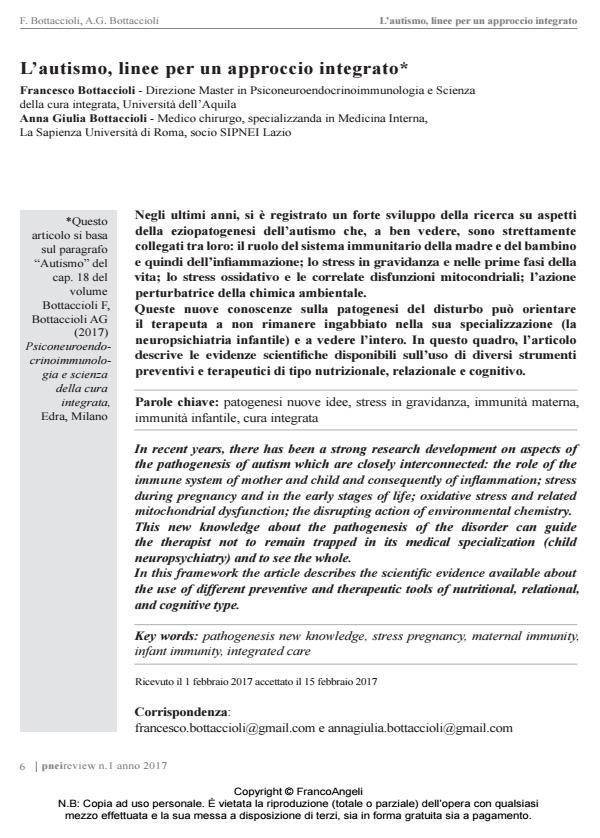Autism, guidelines for an integrated approach
Journal title PNEI REVIEW
Author/s Francesco Bottaccioli, Anna Giulia Bottaccioli
Publishing Year 2017 Issue 2017/1
Language Italian Pages 11 P. 6-16 File size 1085 KB
DOI 10.3280/PNEI2017-001002
DOI is like a bar code for intellectual property: to have more infomation
click here
Below, you can see the article first page
If you want to buy this article in PDF format, you can do it, following the instructions to buy download credits

FrancoAngeli is member of Publishers International Linking Association, Inc (PILA), a not-for-profit association which run the CrossRef service enabling links to and from online scholarly content.
In recent years, there has been a strong research development on aspects of the pathogenesis of autism which are closely interconnected: the role of the immune system of mother and child and consequently of infl ammation; stress during pregnancy and in the early stages of life; oxidative stress and related mitochondrial dysfunction; the disrupting action of environmental chemistry. This new knowledge about the pathogenesis of the disorder can guide the therapist not to remain trapped in its medical specialization (child neuropsychiatry) and to see the whole. In this framework the article describes the scientifi c evidence available about the use of different preventive and therapeutic tools of nutritional, relational, and cognitive type.
Keywords: Pathogenesis new knowledge, stress pregnancy, maternal immunity, infant immunity, integrated care
Francesco Bottaccioli, Anna Giulia Bottaccioli, L’autismo, linee per un approccio integrato in "PNEI REVIEW" 1/2017, pp 6-16, DOI: 10.3280/PNEI2017-001002